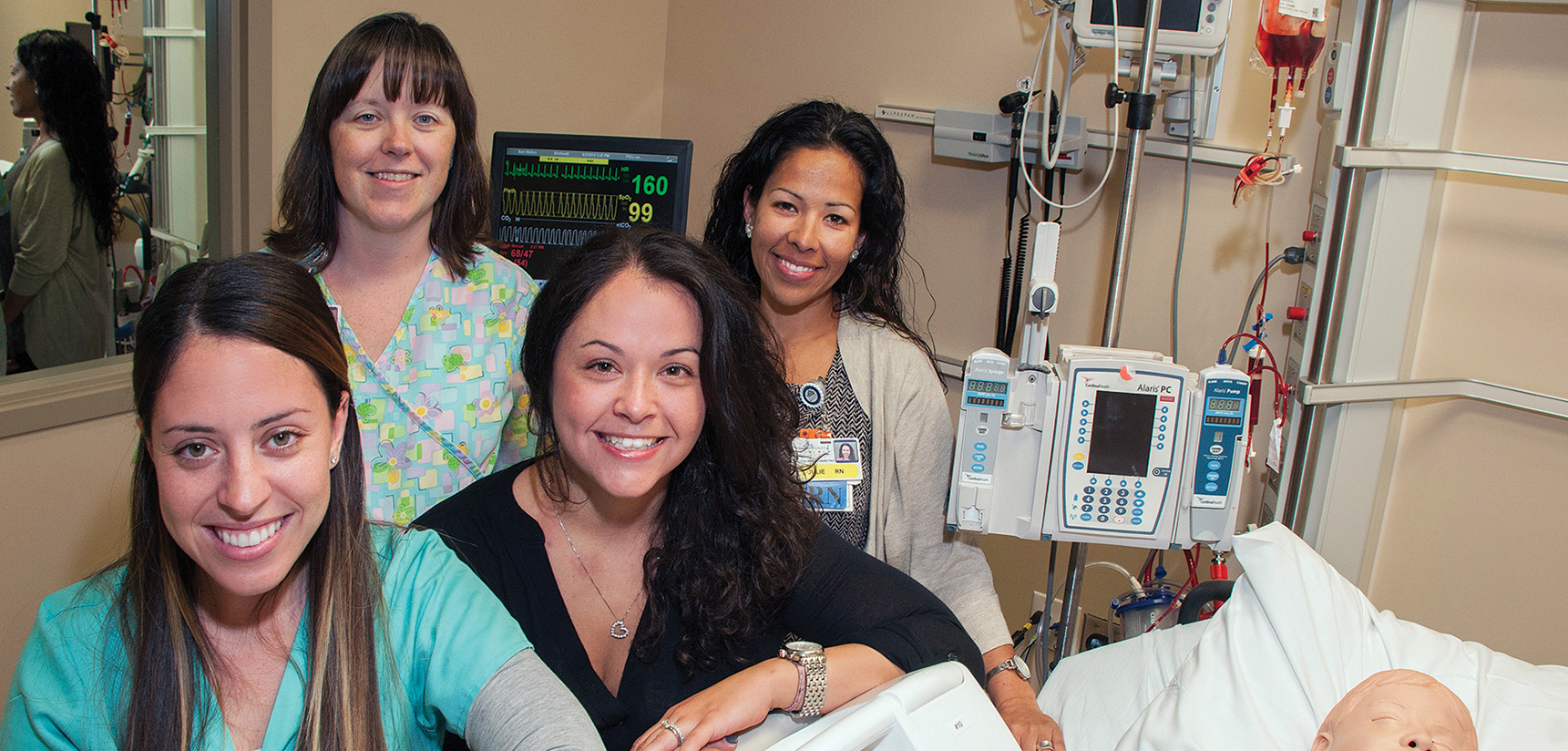Handbook, sims lab prep nurses for unique challenges of stem cell transplant
A hematopoietic stem cell transplant (HSCT) leaves nurses little margin for error. The procedure can create healthy new blood and bone marrow but leaves a patient’s immune system extremely fragile. For those new to caring for HSCT patients, the process can be intimidating. Even for established nurses, keeping skills and knowledge sharp is essential.
As the HSCT program at All Children’s Hospital became the largest in Florida, and the need for additional nurses grew with it, leaders and frontline nurses sought a way to turn a potential problem into an opportunity.
As a bedside nurse, Julie Navarro, BSN, RN, began working on an HSCT handbook that clearly and simply walks staff through the incredibly delicate care of children undergoing the cancer or autoimmune disease treatment, during which something as simple as giving ice to a patient or allowing a visitor could introduce a deadly infection.
Navarro, who is now blood management coordinator and transfusion safety officer at All Children’s and who has a “passion for working with complex HSCT patients,” was supported by Amy Spence, MS, RN, an advanced nursing education specialist, and Bethany Harmon, ARNP, in making the handbook the starting point for nurse orientation. Then it was off to the simulation lab, where the team helped create scenarios that mimicked the challenges of HSCT care without the error and infection risks.
The first simulation begins with the patient-admission process and continues with the preparative regimen through the infusion of stem cells–including specifically timed lab draws, medication line set-ups, chart reviews for documentation, and counting drip rates for the stem cell infusion. In the sims lab, nurses can practice complex skills, ask questions, get comfortable with equipment, correct errors, and learn from peers.
“Combining classroom education and simulation validates competency and ensures that the knowledge and skills required to care for HSCT patients are hard-wired and readily transferred to providing superlative patient care,” says Deborah Del Favero, MSN/ED, RN, director of Hematology-Oncology-HSCT.
The team is currently working to develop Session Two of the orientation, focusing on potential post-transplant complications and their treatments.
From left: Hematology-Oncology nurses Nicole Robertson, Amy Spence, Tina Suarez, and Julie Navarro in the simulation lab.

